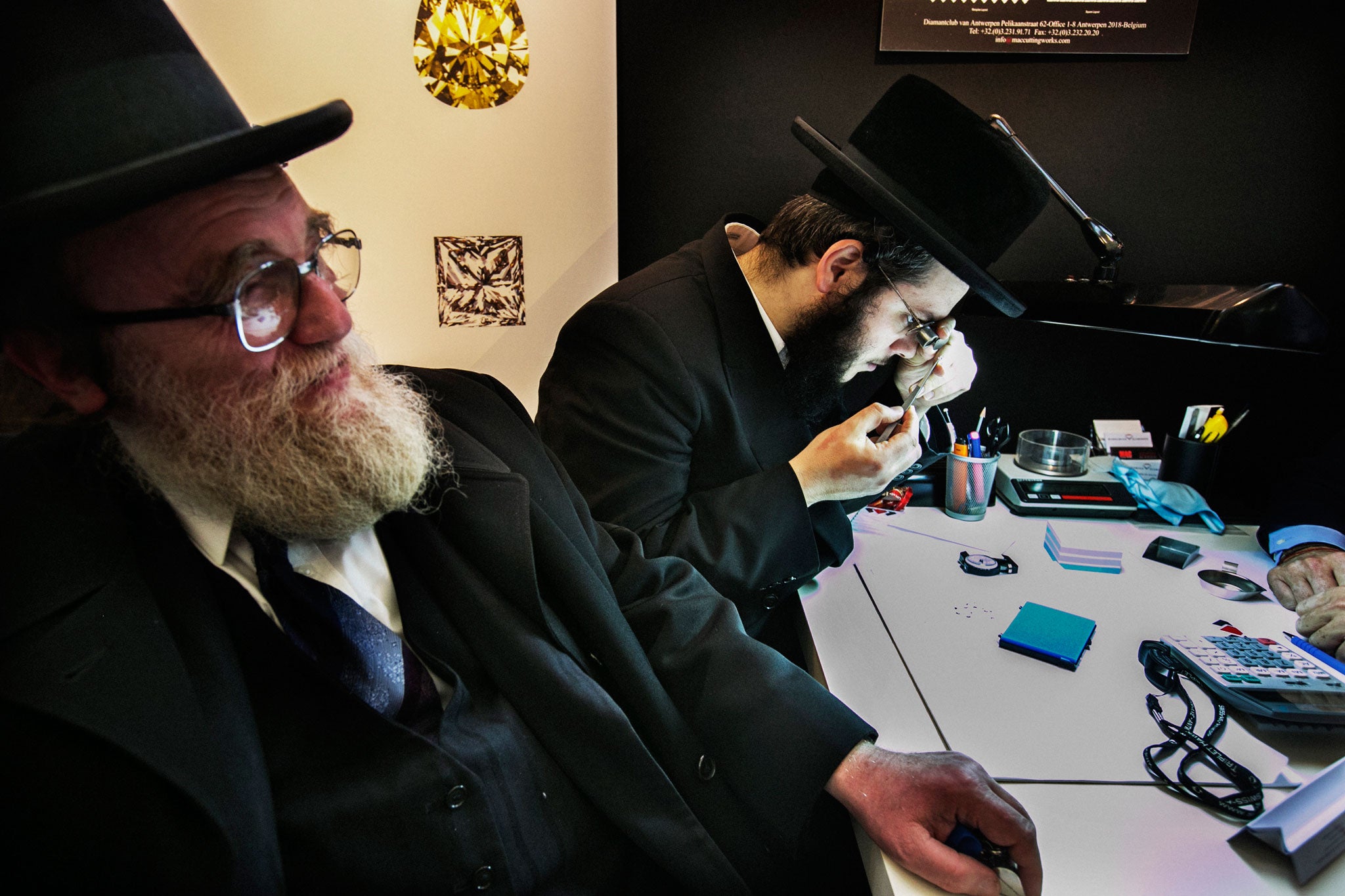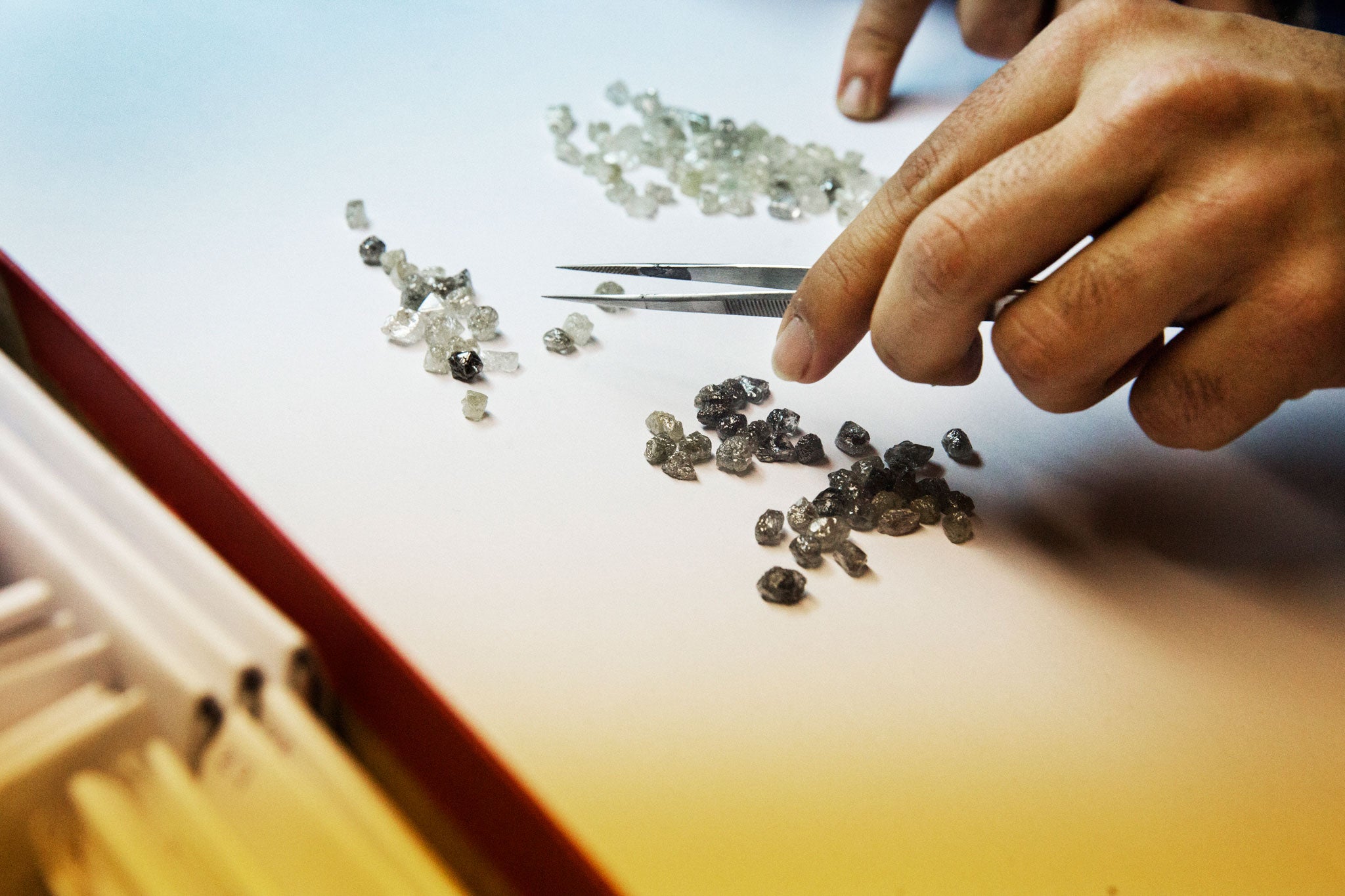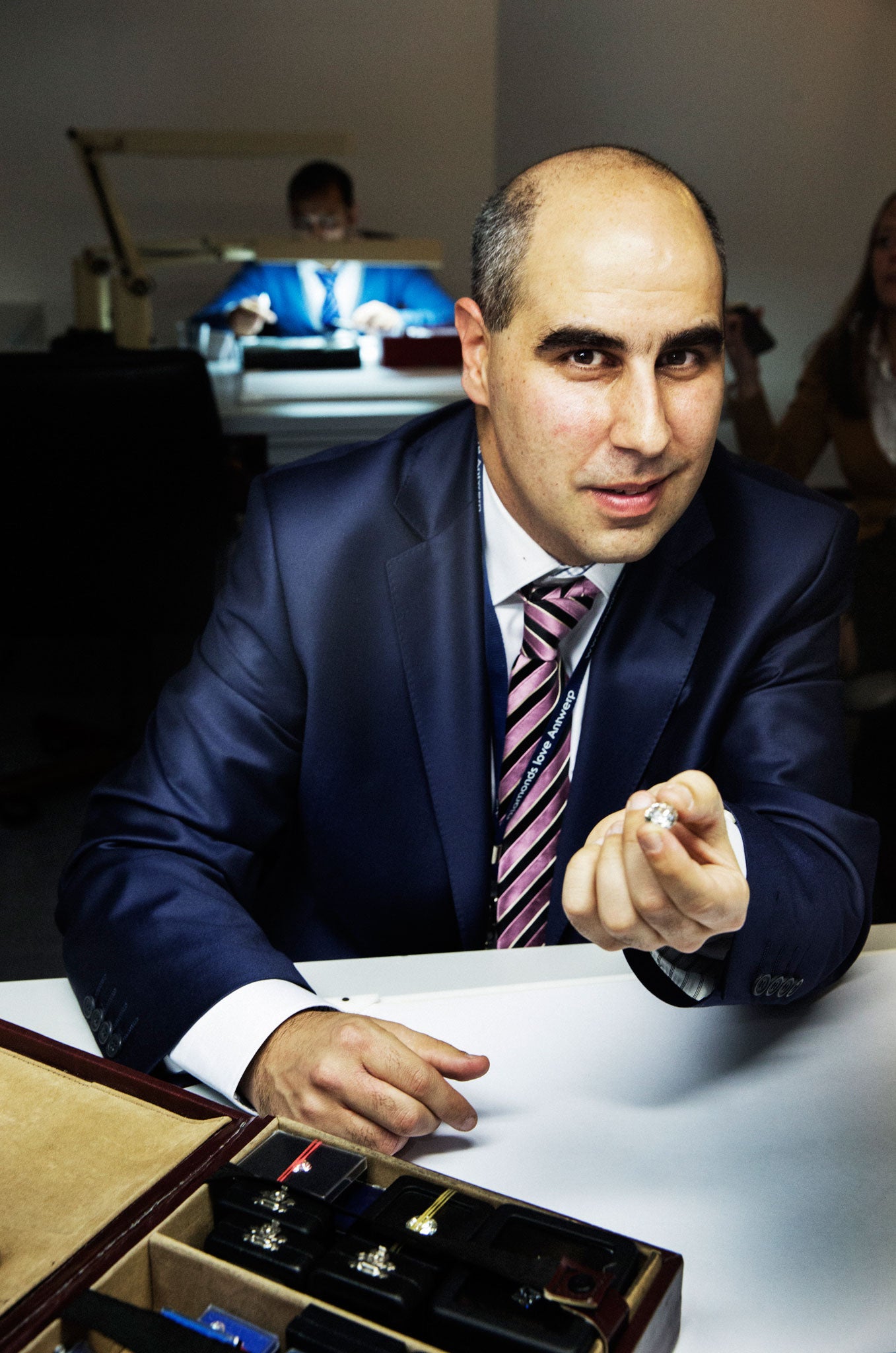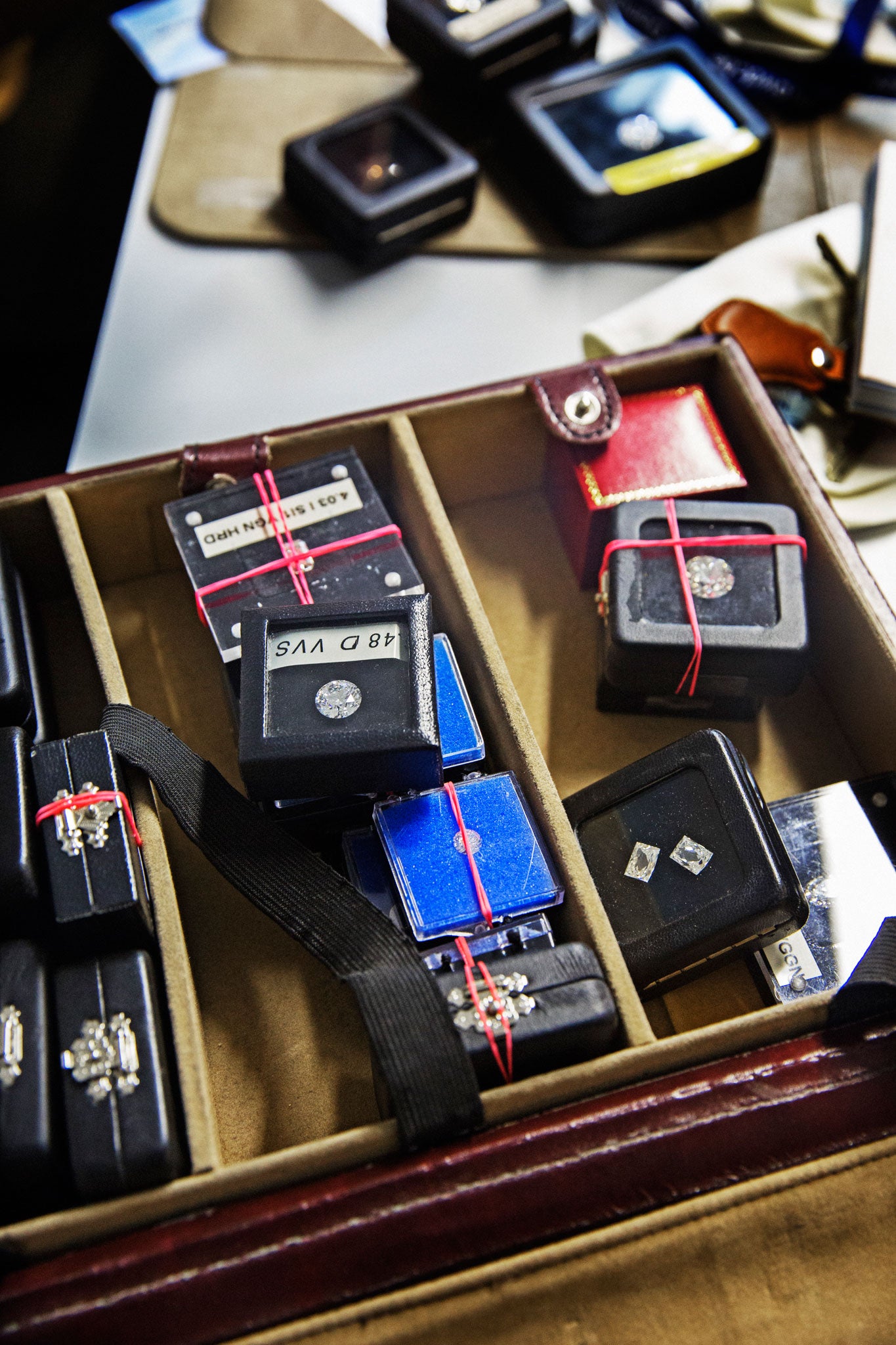Rough trade: Is the world's biggest diamond market about to crumble?
Antwerp's position as the world's diamond capital is being challenged by emerging markets in Israel, Dubai, India and Botswana – and three high-profile European heists have netted $188m (£110m) this year

Your support helps us to tell the story
From reproductive rights to climate change to Big Tech, The Independent is on the ground when the story is developing. Whether it's investigating the financials of Elon Musk's pro-Trump PAC or producing our latest documentary, 'The A Word', which shines a light on the American women fighting for reproductive rights, we know how important it is to parse out the facts from the messaging.
At such a critical moment in US history, we need reporters on the ground. Your donation allows us to keep sending journalists to speak to both sides of the story.
The Independent is trusted by Americans across the entire political spectrum. And unlike many other quality news outlets, we choose not to lock Americans out of our reporting and analysis with paywalls. We believe quality journalism should be available to everyone, paid for by those who can afford it.
Your support makes all the difference.It's a good day at the Antwerp diamond bourse. The board where bereft traders post notices for missing stones is completely bare, each precious carat in this Belgian port city accounted for.
Thefts are rare, but occasionally a speck of the glittering rock can dart off a trader's bench, or disappear into the folds of packaging and find its way into the bins. And who knows what accident could have befallen the rough stone worth $5.8m (£3.5m) which was nestled in my palm a little earlier? All the wealth the iceberg-shaped rock could buy flashed through my mind. But then I remembered the cameras following my every move; the armed guards stalking the corridors of the Antwerp World Diamond Centre (AWDC) headquarters; the heavy security presence on the street outside in a district which a decade ago experienced one of the biggest diamond heists in history.
Security is everything in this small patch of a city where 84 per cent of all diamonds pass through at some point in their journey criss-crossing the globe. At a time when Antwerp's position as the world's diamond capital is being challenged by emerging markets in Israel, Dubai, India and Botswana – and when three high-profile European heists have netted $188m (£110m) this year – officials are keen to stress that Antwerp remains one of the safest places to do business.
"This is something that we live with every day, we wake up with it and we go to bed with it, security is very important to us," says Ari Epstein, the CEO of AWDC, the industry body responsible for documenting each gem imported and exported through the city.

That something so small holds so much value is crucial to the history and aura of the diamond, says Vashi Dominguez, the UK-based entrepreneur behind the jewellery website Vashi.com. "It is the most valuable item per size [and] they are unique, just like fingerprints or snowflakes," says Dominguez, who is in Antwerp sourcing diamonds for the busy Christmas period.
Few products come weighted with such mythology, a unique mix of glamour and danger, with its connotations of decadence and wealth, but also a shady world of smugglers and thieves. The diamond remains snuggly situated in the cliché firmament: they are forever; as big as the Ritz; a girl's best friend. When it appears in headlines, it's often preceded by the word 'blood' or followed by the word 'heist'.
The Kimberley Process – launched in 2003 in response to forced labour and atrocities as warlords pillaged diamond mines to fund civil wars – has largely kept conflict diamonds out of the market, although debate remains over whether Zimbabwe's stones should be sanctioned. But it is the string of heists worthy of Hollywood which have captivated the world this year.
In February, armed thieves intercepted a cargo of diamonds from Antwerp on the tarmac of Brussels Airport. In a meticulously-planned raid which experts say must have had insider involvement, the gang cut through the fence, ran up to a chartered plane and stole more than 100 packets of uncut stones worth about $50m (£30m). More than 30 people were arrested, but most have been released and a pan-European investigation is ongoing. Then in May, $1m (£610,000) worth of diamonds destined to grace the necks and wrists of celebrities at the Cannes Film Festival were stolen from a hotel room.
The glamour of the case attracted worldwide attention, but that was to be surpassed in July when $136m (£83m) was snatched from another Cannes hotel – this time the Carlton, which featured in Alfred Hitchcock's To Catch a Thief – by one opportunist who managed to pull off the biggest heist in France's history. He walked into the hotel in a simple disguise of hat and gloves, entered a private diamond show, waved a gun > at the handful of people, then in the space of a minute made off with a small bag containing extraordinary value. He is still at large.
"It was done by an amateur and showed the world that in 60 seconds you can do something like that, run across the hotel, and still get away with it," says Vashi Dominguez. "We are probably going to see some more [attempted robberies] in the next few months."
By contrast, the robbery in Belgium was expertly planned and executed, although as AWDC's Mr Epstein points out, $50m (£30m) is a drop in the sparkling ocean for Antwerp's diamond trade, where goods worth at least $200m (£122m) pass through its offices each day.
"I would not minimise it, but it's a quarter of a day of imports and exports for a country like Belgium – we have an annual turnover of $50bn (£30.6bn)," he says.

Antwerp's four diamond bourses and hundreds of traders' offices are packed into a few heavily-guarded streets near the station. What is remarkable about the 'square mile' is how drab it is for a district dealing in a product known for its sparkle. There are a few jewellery shops on the fringes of the area, but it is dominated by functional modern office blocks that soar into the grey Flemish skies. Burly security guards load and unload their valuable cargo into armoured security vans.
With more than five centuries experience – and plenty of insurance for companies operating there – it is not jitters about thefts making traders think twice about staying in Antwerp. A greater threat comes from the globalisation of the industry, with big players like De Beers looking at removing some of the many geographical leaps their product has to take.
To understand how the modern industry is changing, let's follow an imaginary diamond on its journey from deep below the Earth's crust to a beaming fiancée's ring finger on Christmas Day. It takes millions of years for the crystals of pure carbon known as diamonds to form about 100 miles beneath the Earth's surface. Slowly they are pushed up to the surface, and today they are mostly mined in Canada, Russia, Australia and across a swathe of southern Africa.
Our diamond is a particularly fine rough specimen from Lesotho, which is extracted by a mining company, then sold to one of a select few diamond trading companies at sales known as 'sights', which take place at sorting centres all over the world. It is now that our diamond – like eight out of 10 rough stones – travels to Antwerp, to be traded between some of the 1,700 companies registered in the city.
Antwerp's position as the world's premier hub for the diamond trade dates back to the 15th century, when Portuguese explorer Vasco da Gama's discovery of a direct sea route from Europe to India – where most diamonds were mined at the time – brought trade in the stones to the port of Antwerp, with its good land and sea connections to the rest of the continent. Over the centuries, the traders set up shop, and with them came the banks financing the business, and the expertise for cutting the stones. But while Antwerp was once a key cutting and polishing centre, the advent of cheap and easily accessible labour in India means the majority of diamond > manufacturing is now done in Mumbai, which employs some 700,000 polishers, compared to about 800 in Antwerp.
Our stone is bought and shipped to Mumbai, where it is analysed and cut into three separate diamonds. One is sent for sale in Hong Kong, a second to Dubai and our diamond returns to Antwerp, where 50 per cent of polished stones are still traded. There, the cut diamond is sold again to a jewellery manufacturer, who ships the stone to London, sets it in a ring, then either sells it directly or on to a high-street retailer. It is here that a love-struck suitor walks into the shop with a chunk of his salary and prepares to pop the question.
Already, individuals such as Dominguez are doing away with many of the middle men and selling direct to the customer online. But it was when De Beers announced this year that they were moving their sight sale from London to Botswana's capital, Gaborone, that diamond dealers really started to worry. De Beers sales represent a huge proportion of the stones on the market, and up until now traders could simply hop on the Eurostar or a flight to London, buy the stones and bring them back to trade in Antwerp. Now they will have to spend days travelling to southern Africa, and in the long-term, it could make more sense to relocate their businesses. They could then send the stones direct from Botswana to emerging, cheaper markets in the Middle East and Asia.

Anish Aggarwal, a partner at the Antwerp-based consulting firm Gemdax, thinks the De Beers move could have an impact, especially as Gaborone strives to promote itself as a hub in one of the most diamond-rich areas in the world. "If you consider that the majority of the world's diamonds come from neighbouring states to Botswana and Botswana itself – South Africa, Namibia, Angola, Zimbabwe – there would be a natural gap in the market for a southern African centre," he says.
To maintain its position, Antwerp needs to make sure it keeps courting the big diamond companies so their business stays put.For Ari Epstein, Antwerp has another draw over competing hubs, and that's the quality of life in a stable, ethnically-diverse city at the heart of Europe. "We've got 73 different nationalities doing business together peacefully and these are nationalities which in other places in the world would not be able to do business together," he says.
While Israel is a key centre for polished diamonds, traders from elsewhere in the Middle East are unwilling to do business there. The same applies in reverse to Dubai, where Israeli citizens are banned. Mumbai is trying to grow its rough stone market, but does not yet have the capacity – or offer the easy quality of life – to attract the big companies.
Walking around Antwerp's square mile, that diversity is instantly apparent in the people hurrying about shouting into phones or lugging what look like laptop bags stuffed with the precious stones. The business was traditionally dominated by the Jewish community, which found a niche in the 15th century in one of the few trades open to them. Storing wealth in such small, portable objects was also attractive to a persecuted community which all too often had to pack up and flee their homes. Today, with the advent of the cutting and polishing trade in Mumbai, the Indian community is equally represented on the streets of Antwerp, mingling with dealers from the Middle East, the Far East, North America and across Europe.
At the centre of the district is the AWDC headquarters, where inside the Diamond Office – under supervision of Belgian government officials – diamond experts toil every day opening each diamond packet which passes through the city, painstakingly checking the contents for classification, weight and value and verifying the Kimberley certificates. The inner sanctum is fortress-like: the diamonds travel by secure lift and bins are kept for days in case a stone is reported missing.
In 2003, at a similar office building just metres away, Italian thieves managed to breach the vault and steal between $100m (£61m) and $500m (£305m) in diamonds, depending on which account you read. The huge haul made headlines worldwide, but for the dealers and traders who spend every day handling stones worth more than a Kensington town-house or a Scottish castle, they are bemused by visitors' fascination with the seamier side of the trade.
"It's hype," says An Goossens, who works for the trading company Sur Jewel. "I still run around very happy with my bag full of diamonds over the street – for us, we don't even see the risk."
Join our commenting forum
Join thought-provoking conversations, follow other Independent readers and see their replies
Comments